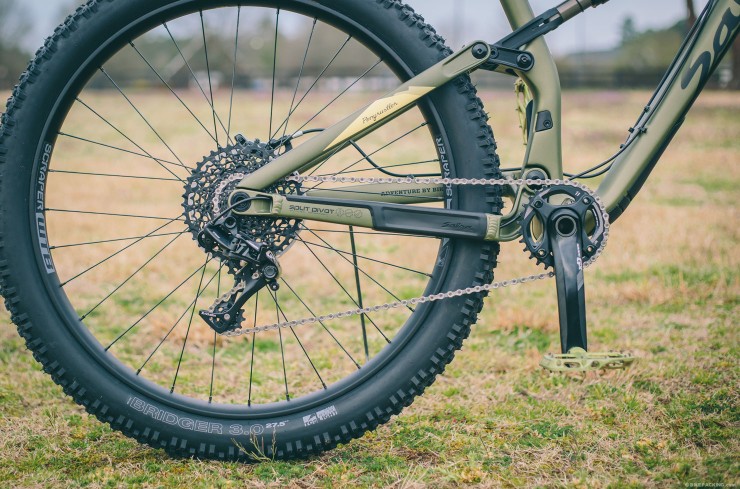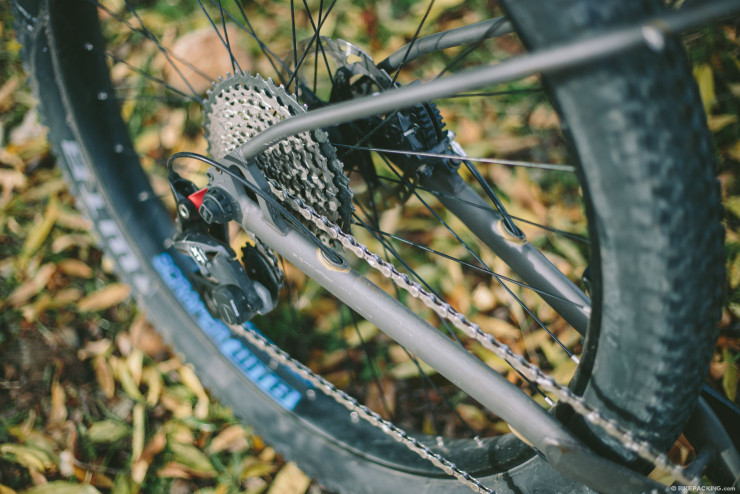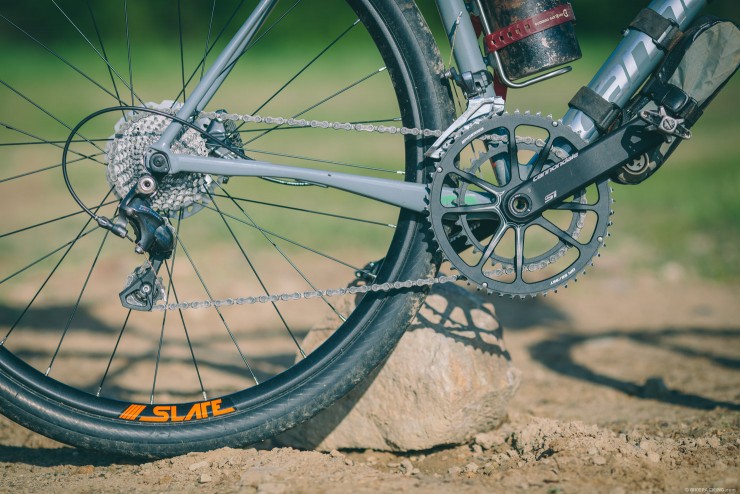Granny Gear Inches: Ride Now, Save Your Knees For Later
It’s not uncommon to hear about a cyclist being sidelined by a knee injury. A crash is often the benefactor of such turmoil. However, riding long hours with a heavy load can also wear on your knees — if not immediately, over time.
Cycling can dish out a lot of stress on knees. Even more so while bikepacking — which usually involves extended riding time on a bike loaded with gear. As one would expect, many knee problems arise from bike-specific issues like saddle height and setback, cleat position, and improper bike sizing. Others are based on intensity, such as increased distance and duration, and using high gearing and low cadence. Either way cyclists’ knees are among the most vulnerable joints for repeated stress injury, and it’s not uncommon to hear of a rider who’s had to resort to knee surgery in their 40s and even 30s. So what can we do to prevent such a horrible sofa sentence? For starters, a proper bike fit is paramount. Another preemptive strategy, especially for those of us who like to frequent steep and rocky trails, is to have a gear ration that features a more than adequate granny gear. Spinning can be the key to keeping stress off the knees during a nasty climb, particularly important in the latter half of a big day.
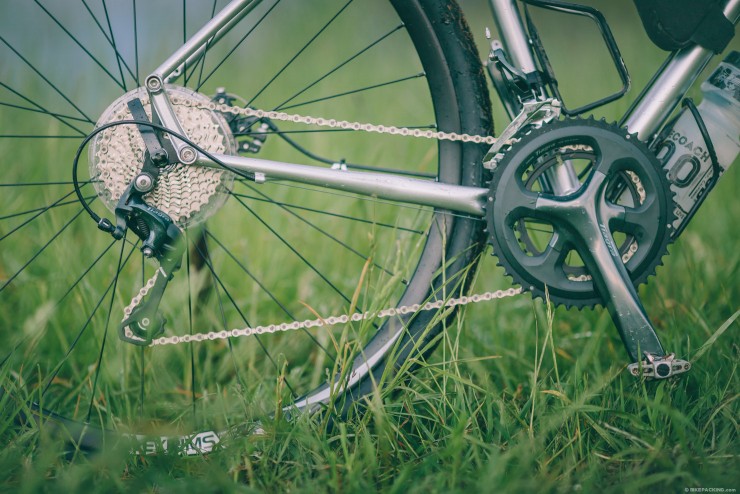
So what’s a good granny gear?
Naturally it’s different for everyone. The likes of Jay Petervary and Josh Kato might not require the same granny gear as a skinny guy with bird legs (such as myself). It also depends on how much you pack, and where you ride. An expedition bikepacker heading to the Himalayas will have very different needs than a racer over relatively flat terrain. Proper gearing is something you just have to feel out based on the situation, as well as your own skill, strength and biomechanics – though starting low is never a bad idea. Know what gearing works for you and make a note of it to have as reference when purchasing a drivetrain or fine tuning your existing setup.
How many gear inches is yours?
To start, let’s talk a little bit about the system of measurement. Gear inches is one of several relative measures of bicycle gearing. It’s basically derived from a formula and provides an indication of the mechanical advantage of different gears. Values for gear inches typically range from 18 (very low gearing) via 70 (medium gearing) to 125 (very high gearing); as in a car, low gearing is for going up hills and high gearing is for going fast. Essentially to calculate gear inches, use this simple formula:
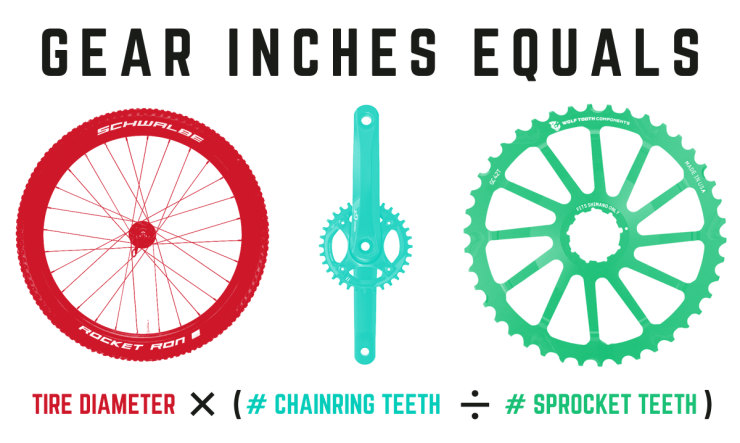
An equivalent system customarily used by continental European cyclists is metres of development, which measures the distance travelled with each turn of the crank. That is, metres of development is calculated using the same equation replacing inches in diameter with meters of circumference. Thus gear inches and development differ by a factor of π times imperial-to-metric conversion. To convert from gear inches to metres of development, multiply by 0.08 (more precisely: 0.0254π).
Gear Inches Calculator
How to find your wheel diameter.
Note that the wheel diameter in the above equation isn’t really the rim diameter; it’s the actual diameter of the mounted and inflated tire. Of course they are always different, and while this isn’t exactly accurate, here’s a simple chart with diameters in millimeters and inches. For the sake of brevity, this is limited to popular tire sizes that might fall into the bikepacking category. For additional sizes, check out this chart.
- 700c x 35mm tire 27.2″/.692m
- 700c x 38mm tire 27.5″/.698m
- 700c x 40mm tire 27.6″/.702m
- 700c x 42mm tire 27.8″/.707m
- 700c x 45mm tire 28.0″/.712m
- 29er x 2.0” tire 28.5″/.724m
- 29er x 2.2” tire 28.9″/.734m
- 29er x 2.4” tire 29.3″/.744m
- 29er x 2.5” tire 29.4″.749m
- 29er x 2.6” tire 29.6″.753m
- 29er x 2.8” tire 30.0″.763m
- 29er x 3.0” tire 30.5″/.774m
- 650B x 47mm” tire 26.7″/.678m
- 650B x 50mm” tire 26.9″/.684m
- 27.5 x 2.1″ tire 27.4″/.696m
- 27.5 x 2.2″ tire 27.4″/.696m
- 27.5 x 2.4″ tire 27.8″/.706m
- 27.5 x 2.8″ tire 28.5″/.724m
- 27.5 x 3.0″ tire 29.0″/.736m
- 27.5 x 3.8″ tire 30.6″/.777m
- 26 x 2.0″ tire 26.0″/.661m
- 26 x 2.2″ tire 26.4″/.671m
- 26 x 2.4″ tire 26.8″/.681m
- 26 x 2.8″ tire 27.5″/.699m
- 26 x 3.0″ tire 28.0″/.711m
- 26 x 3.8″ tire 29.6″/.752m
- 26 x 4.8″ tire 31.6″/.803m
OK, so really, what’s a good granny gear?
Again, different strokes for different folks — literally — but I’ll share what I’ve found. To me, when bikepacking, that magical number falls around 19 gear inches or under — specifically for a mountain bike destined for steep terrain and trails. This number differs on a gravel bike as there is usually less tire resistance and rotational weight. To illustrate, here are five bikes that I’ve ridden in the past 8 months and what their granny gear translates to in gear inches. Each shows the bike, wheel size, and drivetrain on the left, then the granny gear ration (front x rear) and gear inches.
- Salsa Pony Rustler, 27.5+, 1×11 (30x42t) 20.7 gear inches
- Niner RLT 9 Steel, 700c/35mm, 2×11 (36x32t) 30.6 gear inches
- Surly ECR, 29+, Rohloff (34txRohloff 14s) 18.1 gear inches
- Surly Krampus, 29+, 2×10 (22x36t) 18.6 gear inches
- Marin Pine Mountain 2, 27.5+, 1×11 (32x42t) 22.1 gear inches
The ECR/Rohloff combo has the lowest gearing. And while 1st isn’t the most frequently used gear on this bike, there have been plenty of times where it came in handy, such as the High Atlas in Morocco and the Transnevada. Conversely, the Marin Pine Mountain at 22 gear inches was a little hard on the old knobbies. A 30t chainring would have brought it to the same level as the Pony Rustler, and made it more suited for the steep terrain that the Altravesur route dished out. The Niner RLT 9 Steel was absolutely brutal on the steeps; but pretty good for going fast on flat terrain.
For reference, let’s take a look at the high gear to add perspective to the overall range of each of these bikes and drivetrains.
- Salsa Pony Rustler, 27.5+, 1×11 (30x11t) 79.1 gear inches
- Niner RLT 9 Steel, 700c/35mm, 2×11 (46x11t) 113 gear inches
- Surly ECR, 29+, Rohloff (34txRohloff 14s) 95.08 gear inches
- Surly Krampus, 29+, 2×10 (36x11t) 99.8 gear inches
- Marin Pine Mountain 2, 27.5+, 1×11 (32x11t) 84.4 gear inches
The 2×10 offers the widest range of gearing which is great for a grueling expedition. For the sake of comparison, how about a classic 26×2.2″ mountain bike with a 3×9 MTB drivetrain, let’s say a 42-32-22 crankset and 11-32 cassette? The granny gear would be 18.15 and the high gear would be 100.1.
Please keep the conversation civil, constructive, and inclusive, or your comment will be removed.








